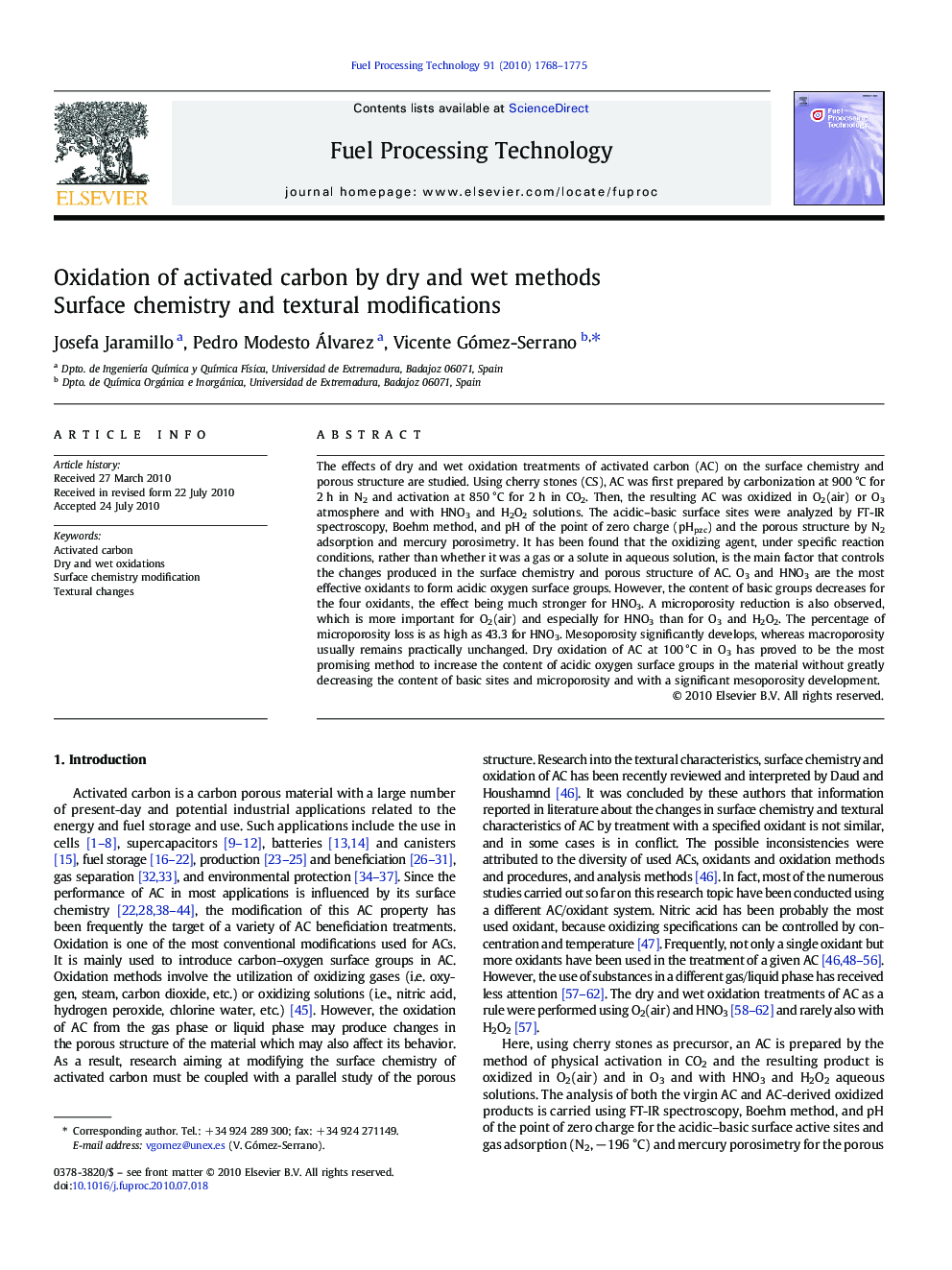| کد مقاله | کد نشریه | سال انتشار | مقاله انگلیسی | نسخه تمام متن |
|---|---|---|---|---|
| 210669 | 461719 | 2010 | 8 صفحه PDF | دانلود رایگان |

The effects of dry and wet oxidation treatments of activated carbon (AC) on the surface chemistry and porous structure are studied. Using cherry stones (CS), AC was first prepared by carbonization at 900 °C for 2 h in N2 and activation at 850 °C for 2 h in CO2. Then, the resulting AC was oxidized in O2(air) or O3 atmosphere and with HNO3 and H2O2 solutions. The acidic–basic surface sites were analyzed by FT-IR spectroscopy, Boehm method, and pH of the point of zero charge (pHpzc) and the porous structure by N2 adsorption and mercury porosimetry. It has been found that the oxidizing agent, under specific reaction conditions, rather than whether it was a gas or a solute in aqueous solution, is the main factor that controls the changes produced in the surface chemistry and porous structure of AC. O3 and HNO3 are the most effective oxidants to form acidic oxygen surface groups. However, the content of basic groups decreases for the four oxidants, the effect being much stronger for HNO3. A microporosity reduction is also observed, which is more important for O2(air) and especially for HNO3 than for O3 and H2O2. The percentage of microporosity loss is as high as 43.3 for HNO3. Mesoporosity significantly develops, whereas macroporosity usually remains practically unchanged. Dry oxidation of AC at 100 °C in O3 has proved to be the most promising method to increase the content of acidic oxygen surface groups in the material without greatly decreasing the content of basic sites and microporosity and with a significant mesoporosity development.
Journal: Fuel Processing Technology - Volume 91, Issue 11, November 2010, Pages 1768–1775